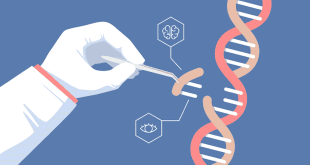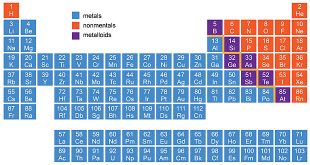10th Science Pre-Board Question Paper (2018-19) School Name: Venkateshwar Global School, Sector 13, Rohini, Delhi 110085 IndiaTime: 3 hoursM.M: 80Subject Code: 086Class: XSubject: ScienceDate: 20/02/2019 General Instructions: The question paper comprises two sections, A, B, C, D and E. You are to attempt both the sections. All questions are compulsory. All questions of Section …
Read More »8th Science Annual Examination (2018-19)
8th Science Annual Examination (2018-19) School Name: Venkateshwar Global School, Sector 13, Rohini, Delhi 110085 India Time: 3 hours M.M: 80 Subject: Science Class: 8 Date: 25/02/2019 General Instructions: All questions are compulsory. Read the paper carefully and write all your answers only on the Answer Sheets provided separately. Draw the diagrams neatly only with …
Read More »10 Solved Science Paper Design 2014
Modified Based on Latest CBSE Question Paper Design Time allowed: 3 hours Maximum marks: 80 Class: X (Science) Year: 2013 – 14 (Outside Delhi) General Instructions: The Question paper comprises of two sections, A and B. You are to attempt both the sections. All questions compulsory. All questions of Section A and all questions of Section …
Read More »Control and Coordination Quiz: 10 Biology
NCERT 10th Class (CBSE) Science: Control and Coordination Quiz 22 Multiple Choice Questions related to NCERT 10th Class (CBSE) Science (Biology) Control and Coordination Quiz The cytoplasm of the single-celled animal controls and coordinates the activities of the organism. The two phytohormones, which are growth promoters are Auxins and Gibberellins. …
Read More »Electricity Quiz: 10 CBSE Science Physics
NCERT 10th Class (CBSE) Science: Electricity Quiz 34 Multiple Choice Questions related to NCERT 10th Class (CBSE) Science (Physics) Electricity Quiz The direction of conventional current is opposite to the direction of flow of electrons. The wire used in the element of an electric heater has very high resistance while …
Read More »Electricity: 10th CBSE Science Physics
Question: Mention one reason why tungsten is used for making filament of electric lamp. Answer: It has low resistivity and high melting point. Question: Calculate the number of electrons constituting one coulomb of change. (Charge one electron = 1.6 × 10-19C) Answer: Number of electron = 1C/1.6 × 10-19C = 0.625 × 1019 = 6.25 × 10-18 …
Read More »Control and Coordination: 10th Biology
Question: What is Hydrotropism? Answer: Hydrotropism is a type of tropism, where the plant shows movement in response to water. Question: What is coordination? Answer: The organ system cannot work independently. They are linked in one way or the other. Working together of all these systems is called coordination. Question: …
Read More »Life Processes Quiz: 10th Science Biology
NCERT 10th Class (CBSE) Science: Life Process Quiz 35 Multiple Choice Questions related to NCERT 10th Class (CBSE) Science (Biology) Life Processes Quiz The feeding of complex organic matter by ingesting, which is subsequently digested and absorbed is called holozoic nutrition e.g., Amoeba, frog, human beings etc. It is because …
Read More »Life Processes: 10 CBSE Science Biology
Question: Name the components of blood which transport: Food, carbon dioxide and nitrogenous wastes Oxygen Answer: (1) Plasma, (2) Hemoglobin Question: When we breathe out, why does the air passage not collapse? Answer: Because it is supported by cartilaginous rings which prevent its collapsing. Question: Name the process of loss …
Read More »Metals and Non-metals Quiz: 10 Science
NCERT 10th Class (CBSE) Science: Work, Life and Leisure Quiz 20 Multiple Choice Questions related to NCERT 10th Class (CBSE) Science (Chemistry) Metals and Non-metals Quiz Elements can be classified as metals and non-metals. Metals are lustrous, malleable, ductile and are good conductors of heat and electricity. They are solids …
Read More » Class Notes NCERT Solutions for CBSE Students
Class Notes NCERT Solutions for CBSE Students




